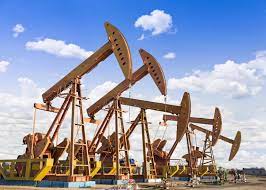NEWS
Libya unites large-scale production with border potential

While Libya experienced a temporary halt in oil production for the first eight months of 2020 due to a blockade against coastal oil export terminals, the country still retains the largest oil deposits in Africa, with more than 48 billion barrels of estimated recoverable reserves.
In addition, Libya produces sweet, high-quality crude that is both relatively easy to extract and sells at a higher price, enhanced by the country's proximity to European markets. While major operators have exploited the country's prolific Sirte Basin, the Murzuq, Ghadames, Kufra and Cyrenaica basins, as well as the offshore Gulf of Sirte, have been relatively underexplored and should hold considerable frontier potential. As a result, Libya offers attractive prospects in both mature and frontier basins,
Prior to the blockade, several IOCs were preparing to further develop Libya's large oil fields. In December 2019, Total and Libya's National Oil Corporation (NOC) signed an agreement granting the French major a minority stake in the Libyan asset Waha. Under the agreement, Total will help the NOC develop the North Giaolo and NC 98 fields in the Waha concession, increasing production by 180,000 b/d and investing $650 million. In the same month, Russian oil company Tatneft resumed upstream operations in the Ghadames Basin after more than five years of delay. Throughout 2019, BP, Eni, and Gazprom announced plans to resume exploration activities in Libya, while OMV and Repsol planned to increase their upstream presence.
Since the force majeure was lifted in October 2020, other IOCs have reaffirmed their commitments to the country. In August, Shell met with the NOC to discuss resuming exploration in Libya, as well as marketing and refining activities, after the company's nine-year shutdown. Meanwhile, Spain's Repsol announced in the same month its intention to resume oil exploration and carry out maintenance work on surface equipment at the El Sharara oil field, Libya's largest oil field with three billion barrels of recoverable reserves.
Last month, Libya's NOC met with Equinor to discuss support infrastructure needs; the rehabilitation and start-up of the Mabrouk field; and facilitating the transfer of technical expertise from the Norwegian multinational to Libya's exploration and production activities. The NOC also met with Eni to extend a deadline for an oil project led by the Italian oil giant that includes the construction of two new fixed offshore platforms opposite the Mellitah complex in western Libya, as well as the development of subsea pipelines adjacent to an onshore gas processing facility.
According to statements by Libya's Central Bank Governor Sadiq Al-Kabir, Libya needs to increase oil production by 40% from current levels to meet its expenses and boost its economy. The North African country currently produces 1.3 million b/d, which is expected to generate $25 billion in revenue by the end of 2021. Now, the country is targeting production levels of 1.8 million b/d by 2022, which should earn $35 billion if the price of a barrel averages around $60. This accelerates previous targets set by the Ministry of Oil and Gas to produce 1.6 million bbl/d by 2023 and 2.1 million bbl/d by 2025. In addition to increasing IOC participation, several factors will be critical to achieving aggressive production.
-

 ANALYSIS11 month ago
ANALYSIS11 month agoThe 3 African countries richest in natural resources
-

 FOCUS ONA1 an ago
FOCUS ONA1 an agoThe 10 largest oil refineries in Africa
-

 NEWS2 ans ago
NEWS2 ans agoRanking of oil producers: Here are the Top 10 African countries.
-

 NEWS7 month ago
NEWS7 month agoTop 10 des pays africains producteur de l’or : Mali 2-eme, Burkina Faso 3-eme
-

 FOCUS ONA7 month ago
FOCUS ONA7 month agoTop 10 oil producers in Africa in 2023
-

 NEWS1 an ago
NEWS1 an agoTop 20 oil producing countries in 2022
-

 NEWS4 month ago
NEWS4 month agoAfrica's 10 largest natural gas production fields.
-

 NEWS7 month ago
NEWS7 month agoIvory Coast: Eni to deploy a cylindrical FPSO and a converted FSO on the Baleine oil field













